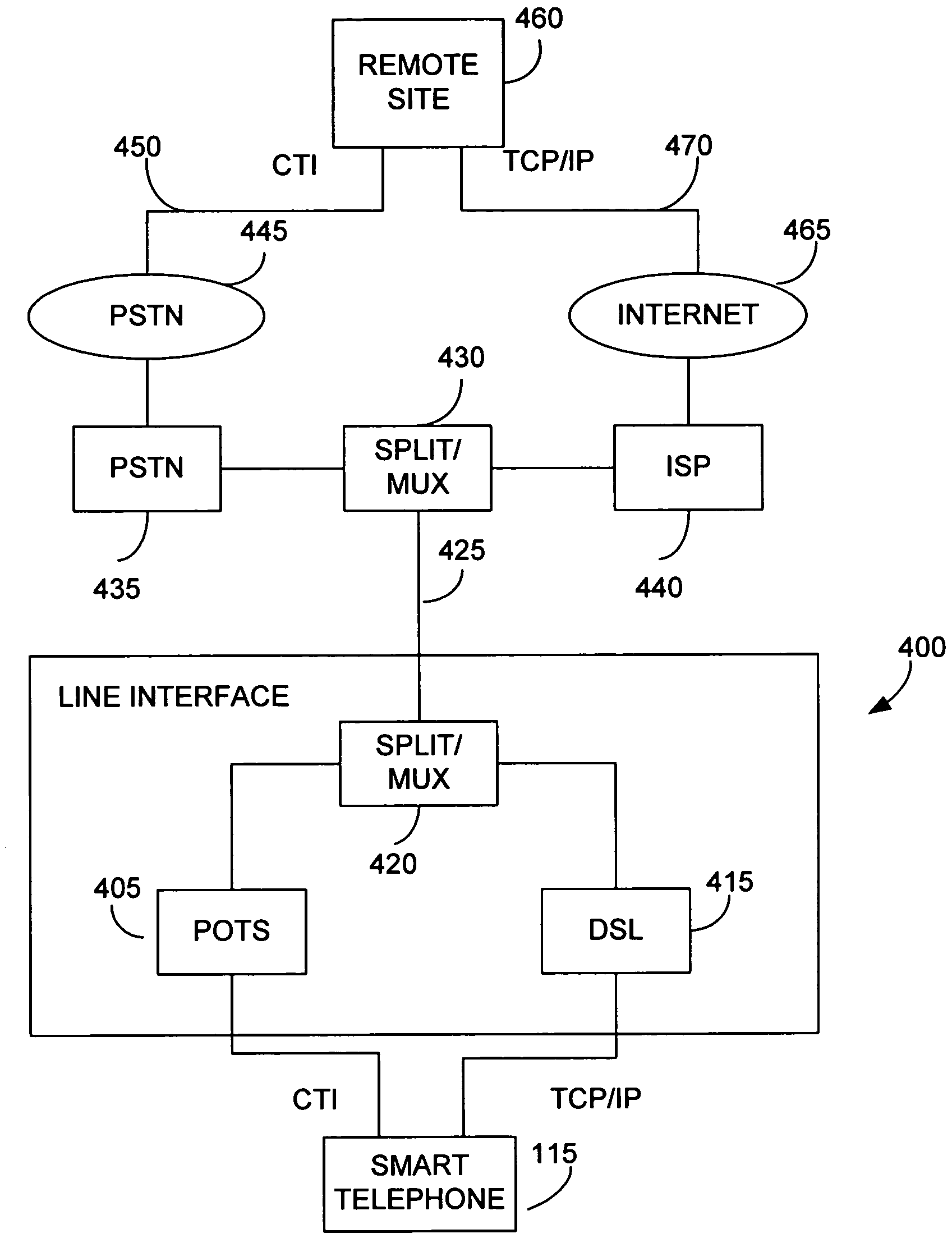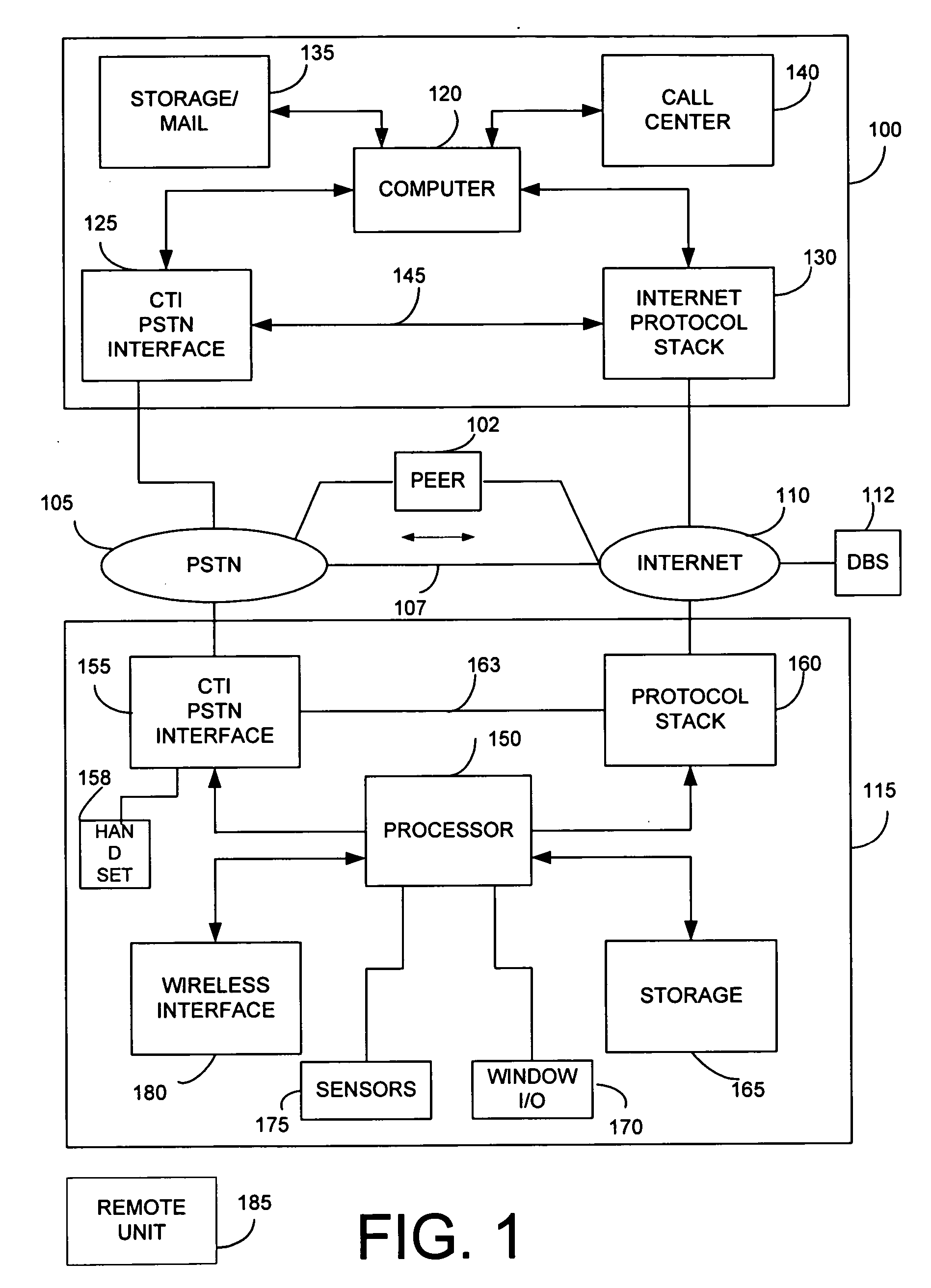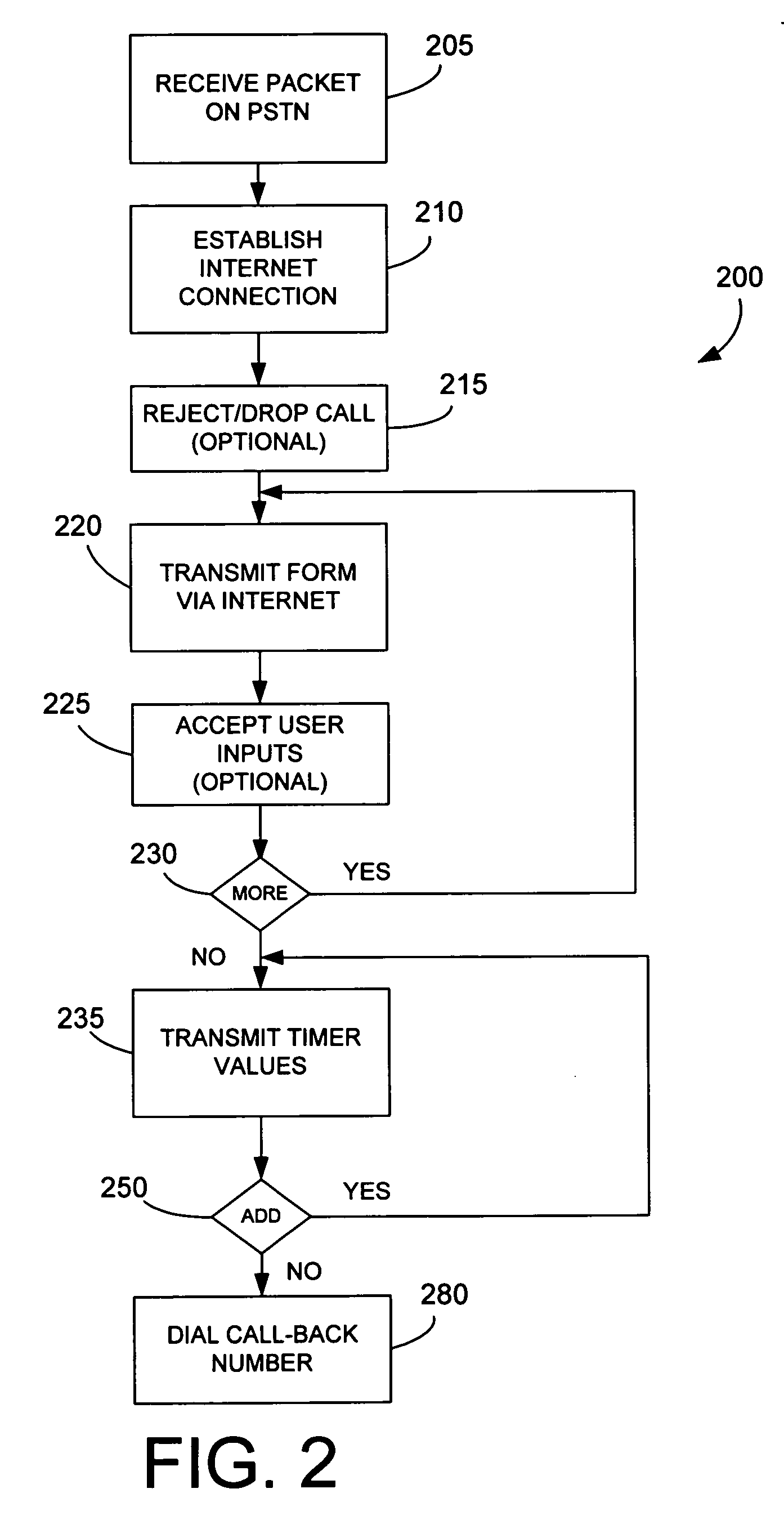Method and apparatus for co-socket telephony
a cosocket and telephone technology, applied in the field of telephone and internet services and protocols, can solve the problems of complex multimedia calls, large bandwidth consumption, and high cost of multi-media calls, and achieve the effect of reducing the number of simultaneous calls, and simplifying the setup process
- Summary
- Abstract
- Description
- Claims
- Application Information
AI Technical Summary
Benefits of technology
Problems solved by technology
Method used
Image
Examples
first embodiment
[0048]FIG. 1 illustrates a communication configuration whereby a CTI server 100 and a smart telephone 115 are each coupled to a PSTN 105 and an internet 110. A peer device 102 may be another device similar to the smart telephone 115, and is also coupled to the PSTN 105 and the internet 110. An optional database system 112 may also be coupled to the network configuration via the internet 110. As will be discussed in connection with the embodiments illustrated by FIGS. 10-12, the database 112 may also be implemented by equipment within the PSTN 105. The PSTN 105 may be coupled to the internet 110 via various types of connections 107 which may include a gateway connection to route long distance voice traffic across the internet 110.
[0049] In a preferred embodiment, the database module is an internet server. The database module 112 includes a coupling to the internet 110. This coupling is operative to receive a client request from the internet 110 including information relating to a tel...
second embodiment
[0054] The processor 150 is coupled to a CTI interface 155 and to an internet protocol stack 160. The CTI interface is also preferably coupled to a handset 158 which may alternatively be coupled directly to the processor 150. The internet protocol stack 160 ideally has a structure similar to the protocol stack 130 as discussed in connection with the CTI server 100 above. An optional direct coupling 163 may be provided between the CTI interface 155 and the protocol stack 160. The processor 150 is preferably also coupled to a storage unit 165 which includes memory and which may include mass storage implemented in technologies such as hard disk drives, solid state disk drives, or other means. The processor 150 is also coupled to an input / output terminal 170 which includes a graphics display capable of displaying windows and / or dialog boxes. The input / output terminal also preferably includes a keyboard and / or mouse to accept user inputs. In the present embodiment, the processor 150 is a...
PUM
 Login to View More
Login to View More Abstract
Description
Claims
Application Information
 Login to View More
Login to View More - R&D
- Intellectual Property
- Life Sciences
- Materials
- Tech Scout
- Unparalleled Data Quality
- Higher Quality Content
- 60% Fewer Hallucinations
Browse by: Latest US Patents, China's latest patents, Technical Efficacy Thesaurus, Application Domain, Technology Topic, Popular Technical Reports.
© 2025 PatSnap. All rights reserved.Legal|Privacy policy|Modern Slavery Act Transparency Statement|Sitemap|About US| Contact US: help@patsnap.com



